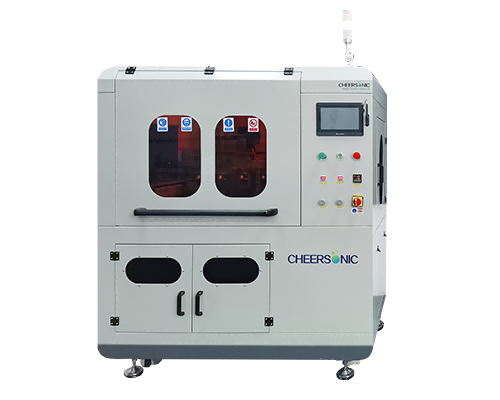Classification of Photosensitive Polyimide
Classification of Photosensitive Polyimide – Photoresist & Polyimide Films Coating Systems – Cheersonic
According to the different photolithography patterns, photosensitive polyimide (PSPI) can be divided into positive photosensitive polyimide (p-PSPI) and negative photosensitive polyimide (n-PSPI). Positive PSPI is that the ultraviolet irradiation area dissolves in the developer, and negative PSPI is that the irradiation area is cross-linked and solidified and no longer dissolves in the developer. In the early days, negative PSPI was more studied, and more research is currently focused on positive PSPI. Positive PSPI can meet the needs of advanced packaging due to its high precision in pattern formation. In addition, it can be developed in an environmentally friendly alkaline aqueous solution, so its application prospects are relatively greater.
Different types of PSPI photoresists have obvious differences in the choice of resin, and are often subdivided into negative ester PSPI, ionic negative PSPI, self-sensitized positive PSPI, azido naphthoquinone positive PSPI, chemical amplification type and other types. PSPI photoresist has certain requirements for both physical and chemical properties and photolithographic properties, so industry practitioners often select resins based on imaging capabilities, photosensitivity, film performance requirements after curing (thermal properties, electrical properties, mechanical properties), processes, storage stability and costs.
The performance of photosensitive polyimide is reflected in two aspects: 1 the photosensitivity of pattern making and 2 the performance of the final patterned film. The photosensitivity depends on the photosensitivity of the PSPI system and the molecular structure of the polymer. The structure and heating process of polyimide have a major impact on the performance of the final patterned film. These properties are mainly related to the resolution, sensitivity, viscosity, adhesion, etching resistance, surface tension and other properties of PSPI.
Ultrasonic spraying systems have been proven to be used in various applications that require uniform and repeatable photoresist or polyimide film coatings. The thickness control range is from submicron to more than 100 microns, and any shape or size can be coated.
Ultrasonic spraying technology is used for semiconductor photoresist coating. Compared with traditional coating processes such as spin coating and dip coating, it has the advantages of high uniformity, good encapsulation of microstructures, and controllable coating area. In the past 10 years, it has been fully demonstrated that the 3D microstructure surface photoresist coating using ultrasonic spraying technology, the prepared photoresist coating is significantly higher than the traditional spin coating in terms of microstructure wrapping and uniformity Craft.
The ultrasonic spraying system can precisely control the flow rate, coating speed and deposition volume. Low-speed spray shaping defines atomized spray as a precise and controllable pattern to avoid excessive spray when producing a very thin and uniform layer. The ultrasonic spray system can control the thickness from sub-micron to more than 100 microns, and can coat any shape or size.
About Cheersonic
Cheersonic is the leading developer and manufacturer of ultrasonic coating systems for applying precise, thin film coatings to protect, strengthen or smooth surfaces on parts and components for the microelectronics/electronics, alternative energy, medical and industrial markets, including specialized glass applications in construction and automotive.
Our coating solutions are environmentally-friendly, efficient and highly reliable, and enable dramatic reductions in overspray, savings in raw material, water and energy usage and provide improved process repeatability, transfer efficiency, high uniformity and reduced emissions.
Chinese Website: Cheersonic Provides Professional Coating Solutions


